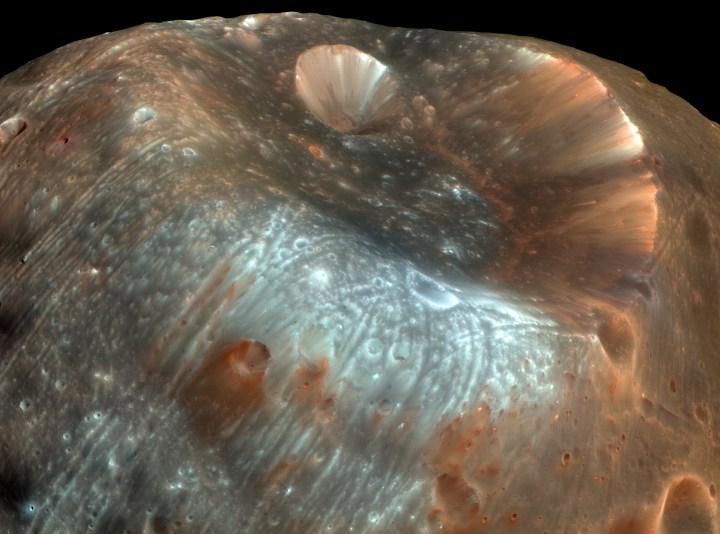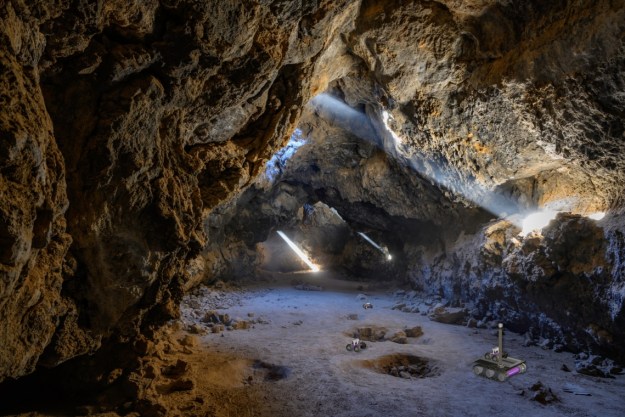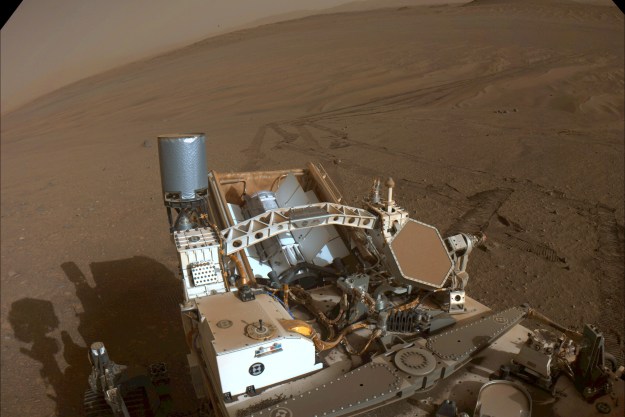
A new study posted Monday in the scientific journal Nature Geosciences predicts that within 20 to 40 million years, Phobos will break apart and start to form a ring with equal density to that of Saturn. The new ring system would last anywhere from a million to 100 million years afterwards before dissipating, they say.
Scientists believe that larger chunks of Phobos will break off as the moon disintegrates and falls to the Martian surface. Mars could be in for an extended period of heavy bombardment as the moon breaks apart as a result, something it and the rest of the solar system has not seen for at least a billion years, if not longer.
While this new paper accelerates the breakup by about 10 million years, it does agree with the previous study’s premise that Phobos is not completely solid. Researchers say analysis of the moon’s composition “suggests that much of Phobos is composed of weak, heavily damaged materials,” accelerating the process.
The continued focus on Phobos and its terminal dance with its host planet may lead to increased pressure to investigate the moon closer. NASA already has a proposed mission in the planning stages that would take a probe to Phobos and Deimos to launch sometime in 2020.
Called PADME (Phobos And Deimos & Mars Environment), one of its stated goals was to determine the origin and composition of both moons. With new questions surrounding Phobos’ eventual fate, researchers might just get the impetus they need to get the go ahead to make the mission a reality.
Scientists in this study already argue that their analysis “underscores the potential orbital and topographic consequences of the growth and self-destruction of other inwardly migrating moons,” and research could lead to a better understand of the life and death sequences of other planetary bodies.
Editors' Recommendations
- NASA’s wild plan to launch a rocket from Mars is ‘like something from an amusement park’
- Mars is spinning faster every year and no one knows exactly why
- See a postcard from Mars taken by the Curiosity rover
- See Mars’s beautiful Jezero Crater from the air in flyover video
- How much fuel is left in this 20-year-old Mars orbiter?


